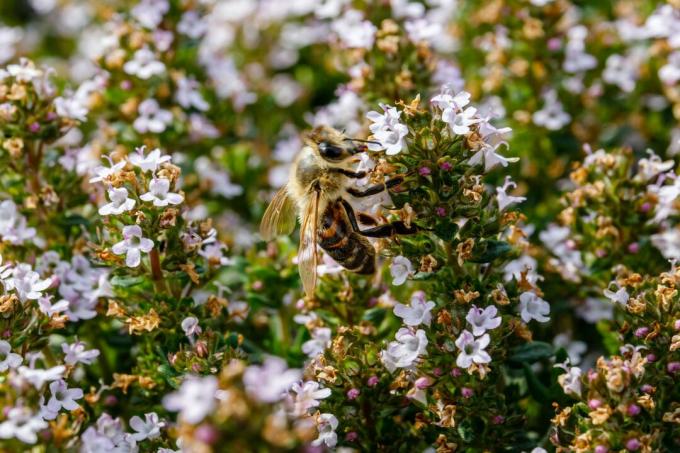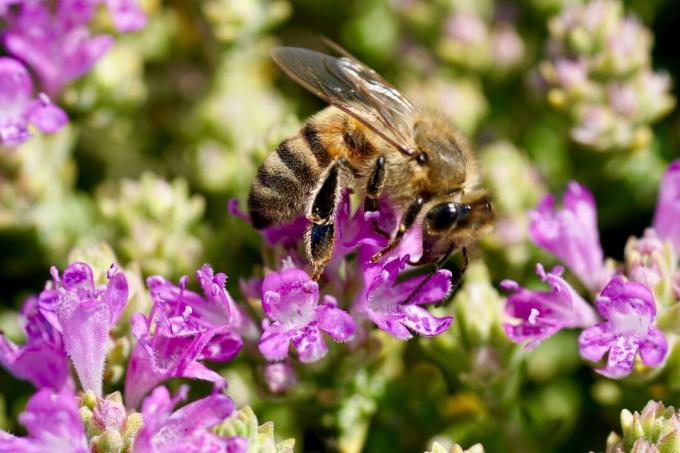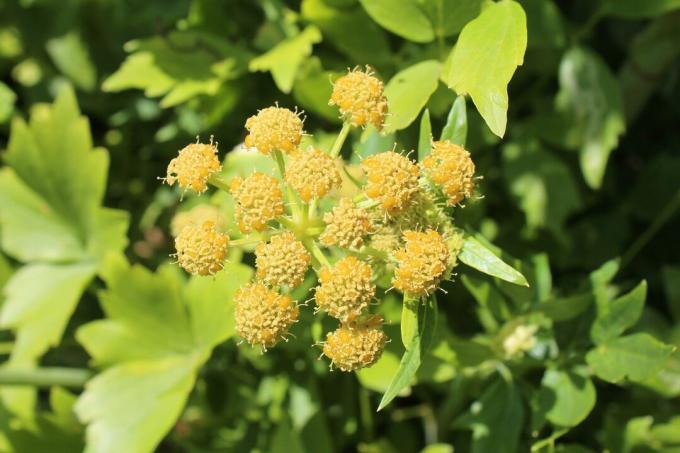Herbs are not only popular with humans, but also enrich the diet of bees. Here you will find 10 bee-friendly herbs for the garden and balcony.

beneficials how bees and bumblebees are extremely important for our ecosystem and biodiversity. Unfortunately, many bees do not find enough food to make ends meet due to one-sided garden design and bee-unfriendly plants. Anyone who wants to support the hard-working beneficial insects often grabs it bee friendly flowers. Although these are beautiful at first glance, they often have no further use apart from their attractive appearance. Additionally, many flowers peak in bloom in late spring and summer - for bees, it is However, it is important that they are supplied with enough food in early spring or late summer will. This is where the bee-friendly herbs come into play: if you not only want to do something good for the bees, but also for yourself, you can also use well-known kitchen plants. These not only taste good to us humans, but also offer a good source of food for bees with their flowers, since the flowering time of various herbs is often spread over the whole year. Below you can find out which herbs are particularly good for bees.
contents
- 1. sage
- 2. thyme
- 3. borage
- 4. hyssop
- 5. lemon balm
- 6. rosemary
- 7. mountain savory
- 8. oregano
- 9. lovage
- 10. mint
1. sage
sage (Salvia) is most certainly considered medicinal plant or known as a kitchen spice. But the plant can not only be used as a strong spice or homemade tea: With its violet flowers, the plant is a small paradise for bees, which is particularly popular with wild bees and bumblebees attracts. In addition to common sage (Salvia officinalis) the crested sage (Salvia viridis) and clary sage (Salvia sclarea). While the sage flowers from May to June, the clary sage flowers from June to August and the crested sage from July to September Just by planting different types of sage, you have a stable food base for bees from spring to late summer create.
2. thyme
thyme (thymus) is an absolute must for Mediterranean dishes, but it can also have a cough-relieving effect as a tea. But not only its aroma, but also its extraordinarily beautiful flowers make the herb so popular: Depending on the species, purple, pink and white carpets of flowers adorn the plant from June to October in. Thyme reliably attracts bees, because the flowering herb has a particularly high nectar value and thus offers a good basis for foraging in summer.

3. borage
borage (Borago officinalis), also known as savory, is one of the particularly bee-friendly herbs that you can grow in the garden. The decorative, star-shaped flowers of borage provide bees with a good nectar yield and are also pretty to look at for humans. Borage is particularly popular with bees because of its long flowering period, which begins in May and can last into September. In addition to their good looks and long flowering period, the flowering herbs also impress with their undemanding nature and pleasant taste.
4. hyssop
hyssop (Hyssopus officinalis) is probably one of the lesser known spice plants. Nevertheless, it is worth growing the perennial plant, because the perennial herb is not only considered to be particularly tasty, but also magically attracts bees. In fact, the blue-purple and pink flowers of hyssop are so popular with bees that the plant is colloquially called beeweed. The long and persistent flowering of the plant, which lasts from July to October, is one of the main reasons why hyssop is one of the bee-friendly herbs.

5. lemon balm
The fresh aroma of lemon balm (Melissa officinalis) is very popular with humans and is often used for food and drinks. In addition to being used for teas and desserts, bees also like to use lemon balm as a source of food. The small, almost inconspicuous flowers of the plant appear from June and attract not only bees but also bumblebees.
6. rosemary
With its flowering between March and April, the rosemary (Rosmarinus officinalis) among the first bee-friendly herbs to bloom. The herb thus fulfills a particularly important task, because while nectar is often plentiful in summer, food sources for bees are often scarce in early spring. But the flowering herb is not only a pleasure for bees: people also enjoy the colorful flowers and the characteristic aroma of the Mediterranean spice.
Tip: Our Plantura bee pasture contains a variety of bee-friendly flowers and herbs. In this way you can optimally provide bees and bumblebees with food and turn your garden into a true bee paradise.
7. mountain savory
mountain savory (Satureja montana) is a great addition to hearty dishes with its strong aroma and is often used to flavor beans. In addition, the plant is considered to be particularly easy to care for, undemanding and quickly forms a small lawn carpet. From July to October, the plant shows its small flowers, reliably attracting bees and other beneficial insects that cannot resist the bee-friendly herb.

8. oregano
oregano (origanum) is probably one of the herbs that should not be missing in any garden. Especially in the Mediterranean cuisine, almost every dish is seasoned with the spicy plants. But did you know that the herb is also good for bees? Wild bees and bumblebees in particular love the white-pink flowers of the bee-friendly herb, which appear on the plant between July and August.
9. lovage
With its intense flavor is lovage (Levisticum officinale) is a great addition to soups and stews, which is why the plant is also known as maggi herb. But lovage is also attractive for bees: from June to August, the flower of the lovage is available for insects. Although their yellow-green flowers are rather inconspicuous, the herb is ideal for wild bees and bumblebees as a food supplier.

10. mint
mint (mentha) is arguably one of the most popular spices in many gardens at the moment. It is particularly popular in drinks or sweet treats. Especially the numerous ones types of mint and the associated aromatic diversity make the plant so popular. But mint is also very popular with beneficial insects: it is one of the plants that are suitable as herbs for bees and butterflies. The peppermint (mentha × piperita) flowers from June to August. However, other types of mint also flower at different times – such as spearmint (Mentha spicata), which flowers from July to September. Smaller wild bee species in particular benefit from the bee-friendly plant. By the way: even if the catnip (Nepeta cataria) despite its name, is only distantly related to mint, it also reliably attracts small beneficial insects such as wild bees with its flowering period from July to September.
In addition to herbs, there are many other plants that bees like. For example, in this article you will find a selection of bee friendly flowers.



